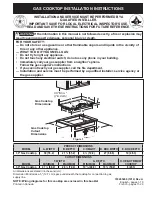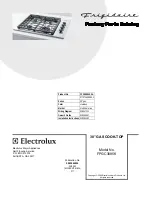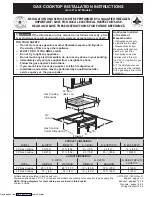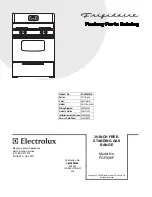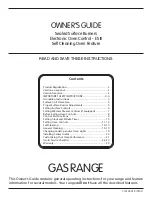
Burner Assembly
CAUTION: DO NOT
OPERATE THE BURNER
WITHOUT ALL BURNER
PARTS CORRECTLY IN
PLACE.
The electrode of the spark
igniter is exposed when the
top of the burner is removed.
Contact with an exposed
igniter while a burner is
being turned on will cause a
slight electrical shock.
Burner
I
he burner assemblies should be
washed regularly and, of course,
after
Turn all controls off and wait
all component parts are cool before
removing burner parts.
See Care and Cleaning instructions.
Cookware Advisory
Aluminum: Medium-weight
cookware is recommended because
it heats quickly and evenly. Most
foods brown evenly in an
aluminum skillet. Minerals in food
and water will stain but will not
harm aluminum. A quick scour
with a soap-filled steel wool pad
after each use keeps aluminum
cookware looking shiny and new.
Use saucepans with tight-fitting
lids when cooking with minimum
amounts of water.
Cast Iron: If heated slowly, most
cast-iron skillets will give
satisfactory cooking results.
Enamelware: Under certain
conditions, the enamel of some
cookware may melt. Follow
cookware manufacturer’s
recommendations for cooking
methods.
Glass: Glass conducts heat very
slowly. There are two types of
glass cookware—those for oven
use only and those for surface
cooking in direct contact with the
flame (saucepans, coffee pots and
teapots). Be certain to choose the
correct type.
Heatproof Glass Ceramic: This
type of cookware conducts heat
very slowly and cools very slowly.
Check cookware manufacturer’s
directions to be sure it can be used
on gas
Stainless Steel: This metal alone
has poor heating properties, and is
usually combined with copper,
aluminum or other metals for
improved heat distribution.
Combination metal skillets
generally work satisfactorily if
used at medium heat as the
manufacturer recommends.
17
Summary of Contents for ZGW124EN
Page 1: ...Yom Monogr Component CooMop System...
Page 32: ...Notes 32...
Page 33: ...Notes 33...
Page 34: ...Notes 34...




































